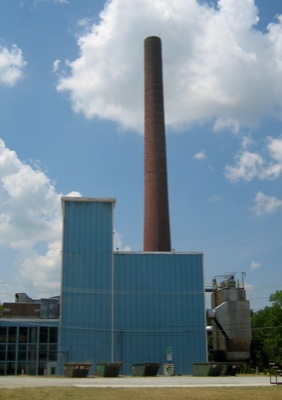Thursday, July 19th, 2012
New law would track commercial ag fertilizer
Ohio Clean Lakes Initiative
By Nancy Allen
Ohio officials want new legislation that tracks man-made commercial fertilizer to understand how phosphorus runs into state water bodies.
Details of the legislation, which could be introduced this year or next, are unknown. So far, officials have said the legislation would cover manufactured fertilizer used as part of a farmer's overall nutrient management plan, which tells where, when and in what amount to apply nutrients without causing pollution. The legislation would give the state jurisdiction over runoff or pollution caused by commercial fertilizer. The state now only has jurisdiction if it's caused by manure.
The possible law was part of an announcement Wednesday on the state's Clean Lakes Initiative, which will focus on improving water quality while maintaining agricultural productivity.
"We have 76,000 farms and some of the best soils in the nation, so it's imperative to maintain agricultural productivity and address problems we're beginning to see in the western basin of Lake Erie and Grand Lake," Ohio Department of Agriculture Director David Daniels said. "We're looking at changes in our laws to better track where commercial fertilizer sales are occurring ... to be made available to researchers on nutrients in different watersheds."
Matt Heckler, a technician with the Mercer County Soil and Water Conservation District, said most farmers in the county use manure, instead of manmade commercial fertilizer, on their crops because of the large number of animals in the county.
He said the new legislation likely would impact farmers in the northern part of the county.
"Lots of guys still put nitrogen on their corn as a row starter whether they use manure as part of their nutrient needs or not," Heckler said. "The northern part of the county is not utilizing manure to the degree that the southern part is because they don't have the livestock numbers the southern part has."
Heckler said many agribusinesses in the county sell commercial fertilizer and custom-apply it for farmers.
Daniels and directors of the Ohio Department of Naturals Resources and Ohio EPA said the initiative will implement recommendations in a March report aimed at reducing harmful algal blooms in the Western Basin of Lake Erie and Ohio inland lakes. The eight-page report requested by Gov. John Kasich includes recommendations for decreasing agricultural nutrients - mainly dissolved phosphorous found in manufactured fertilizer - in Ohio waterways. The dissolved form of phosphorous is most readily available for uptake by algae and the main form of phosphorous causing problems.
Phosphorous in farm field runoff has been blamed in part for toxic blue-green algae blooms in numerous water bodies across Ohio, including Grand Lake. Phosphorous found in manure that runs off mostly farmland is the main food source of Grand Lake's toxic blue-green algae.
Jim Zehringer, ODNR director, said the state would use $3 million in the state's biennium budget to fund the initiative. The state also could receive an Ohio EPA grant.
The state will work with local soil and water conservation districts to expand the use of "on the ground" practices that have been shown to reduce nutrient runoff and begin implementing the 4Rs program, which promotes using the right fertilizer at the right rate at the right time and in the right place, Zehringer said.
Daniels said during the drought, working fertilizer well into the soil is more important than ever because some fertilizers normally rely on rainfall to work their way into the soil.
"Studies indicate that timing of fertilizer application is extremely important and how well it's incorporated into the soil layers significantly reduces the dissolved phosphorus runoff that's feeding the problems we're seeing," Daniels said.
The initiative also calls for the state to partner with universities to do research and test farm drainage devices, different fertilizer applications and soil incorporation techniques on 33,500 acres in five counties that drain into the western Lake Erie basin. The state also will put out water monitoring stations to gather data at lakes that have had toxic algae blooms, Daniels said.
"We have one at Buckeye Lake and several at Grand Lake and Lake Erie," Daniels said. "We're going to purchase more of those across the state as permanent stations at fixed locations."
Ohio EPA Director Scott Nally said the EPA is establishing the framework for this longterm monitoring and sampling protocol to better understand dissolved phosphorous.
The Agricultural Nutrients and Water Quality Working Group report released in March can be found at http://ohiodnr.com/portals/12/docs/waterqualityreport.pdf.
For more information on the Ohio Clean Lakes Initiative, visit http://cleanlakes.ohio.gov/.


